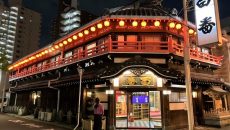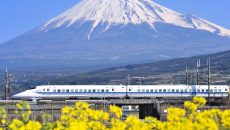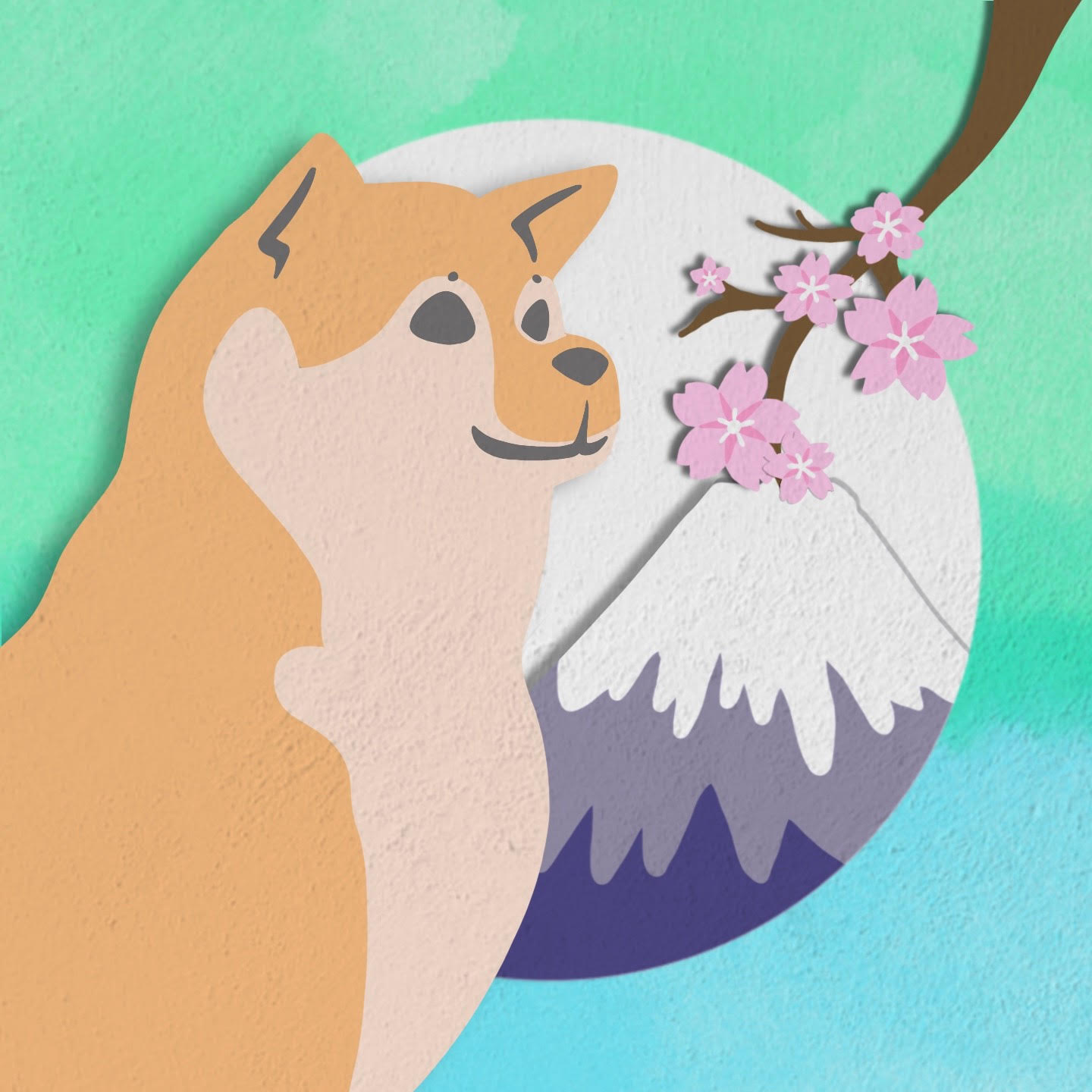A Japanese apartment tour. Living standards, appliances and pre-installed features. See what you can expect when renting a place in Tokyo, Japan.
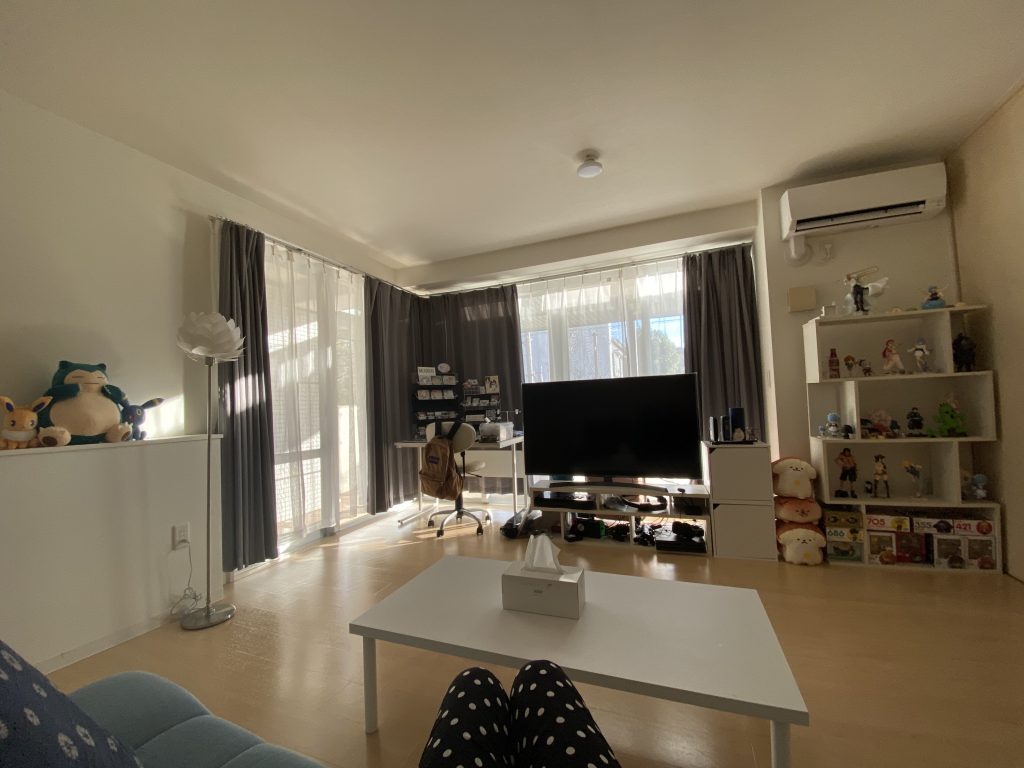
Caryn here! Today I want to show you my Japanese apartment. First, let me talk about rent.
The Rent
Most rental apartments here in Japan can cost about six months’ rent upfront as well as gratitude money. Gratitude fee is 1 to 2 months’ worth of rent that goes to the owner of the property as thanks to letting you rent their space. Luckily, I found this government-owned building, which means no key money, no deposit, no gratitude money, and no 1-3 months advance payment, phew. Some places even charge guarantor company fees, renters, and fire insurance, as well as a lock exchange fee. If you are a first-time renter looking for a place in Japan, unless you find a government-owned place, you usually have to have at least six months’ rent-ready in advance and be prepared to sign a two-year contract.
Some owners even have a no gaijin policy. As soon as they learn that you are a foreigner, almost 70% of places for rent close their doors on you. And that is not illegal for them to do so at all. If you are tight on money, I suggest looking for realtors like UR to find yourself a well-maintained government building to skip the fees and contracts. Government buildings exist in places where they want to increase the resident count hence the awesome perks.
Layout
So moving on, some things about my apartment. Our home layout in Japan is 2LK, which stands for 2 bedrooms, one living room, and a kitchen. We also scored a huge terrace because we got the first floor unit. Most people in Japan do not like living in the first floor due to privacy, street noise, and most households still prefer hanging their laundry. And in some cases, flooding, and robbery as well. It rarely happens but is also a big factor why people prefer the higher floors asides from the view. But Japan is a very safe country and a lot of the main wards are very prepared for disasters. Getting a little more discount to be on the first floor is an absolute win for us.
The Genkan
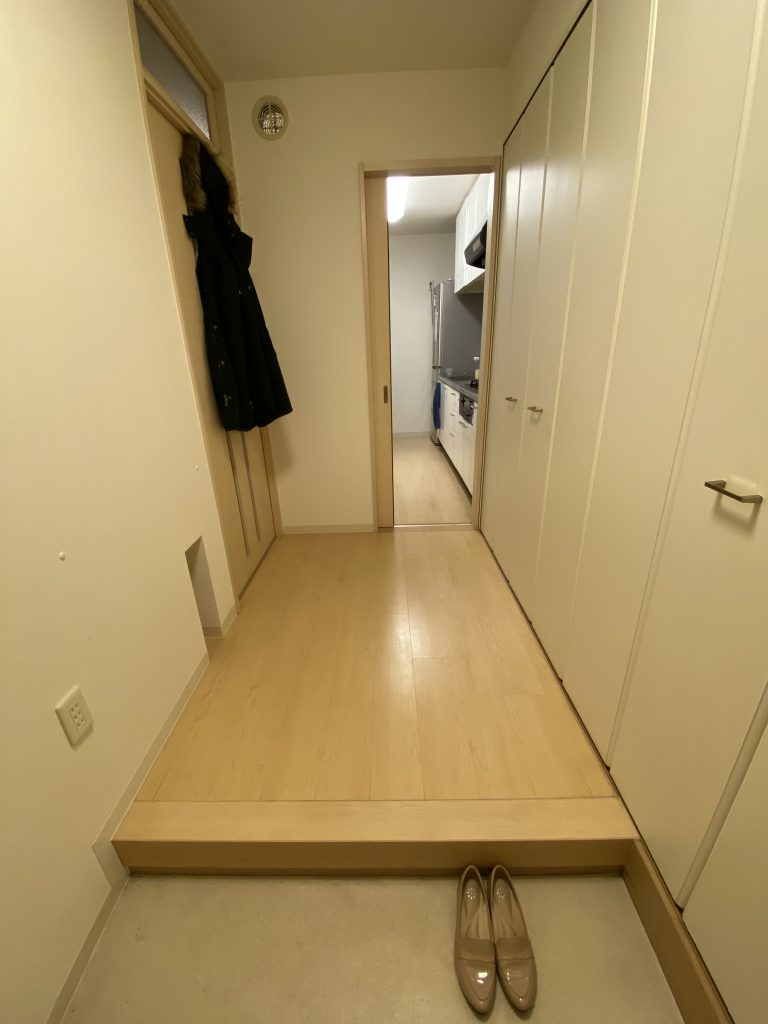
Now, welcome to my home. Like any Japanese apartment as soon as you enter the door you will be at the genkan. The genkan is a very Japanese feature. All homes will have this. It is basically a small area where you take off your shoes. There is a single step right in front of the door where you leave your shoes facing out. Leaving them facing out is very important. When you are visiting Japanese friends they will appreciate this gesture. If you forget, they will most probably pick your shoes up and invert them for you which can be quite embarrassing. So from my genkan you can see that there is the kitchen behind the sliding door. The door to the left goes into the living room.
The Kitchen

Let’s head on to my kitchen first. My kitchen is actually quite spacious compared to a lot of places. Most apartments have one foot sinks and one burner. But since I cook a lot I really needed to have a big kitchen. This was a big factor to why we chose this place.
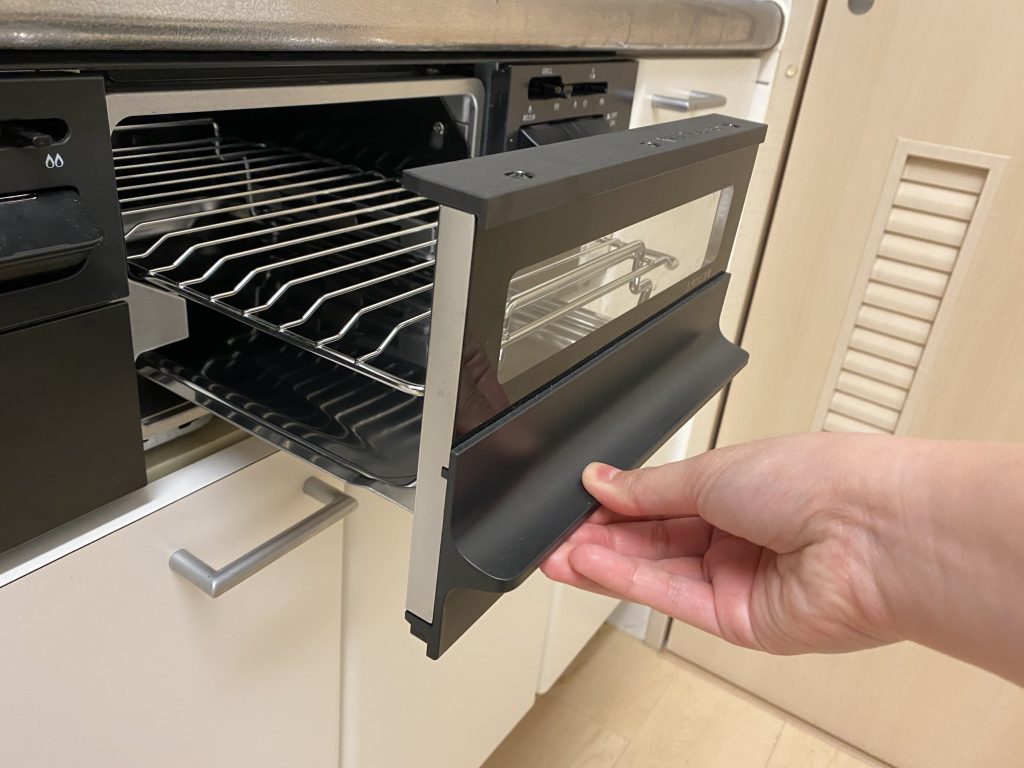
The first time we came to this place one thing I noticed was there was no oven! I soon found out that it is really rare to have full size ovens here in Japan. Instead, a lot of homes here have a “fish grill” as their standard pre-installed unit. You can see here that it goes between the burners and pulls out like so. It can be difficult to clean but it just goes to show how most Japanese families really love having fish.
The Toilet Room
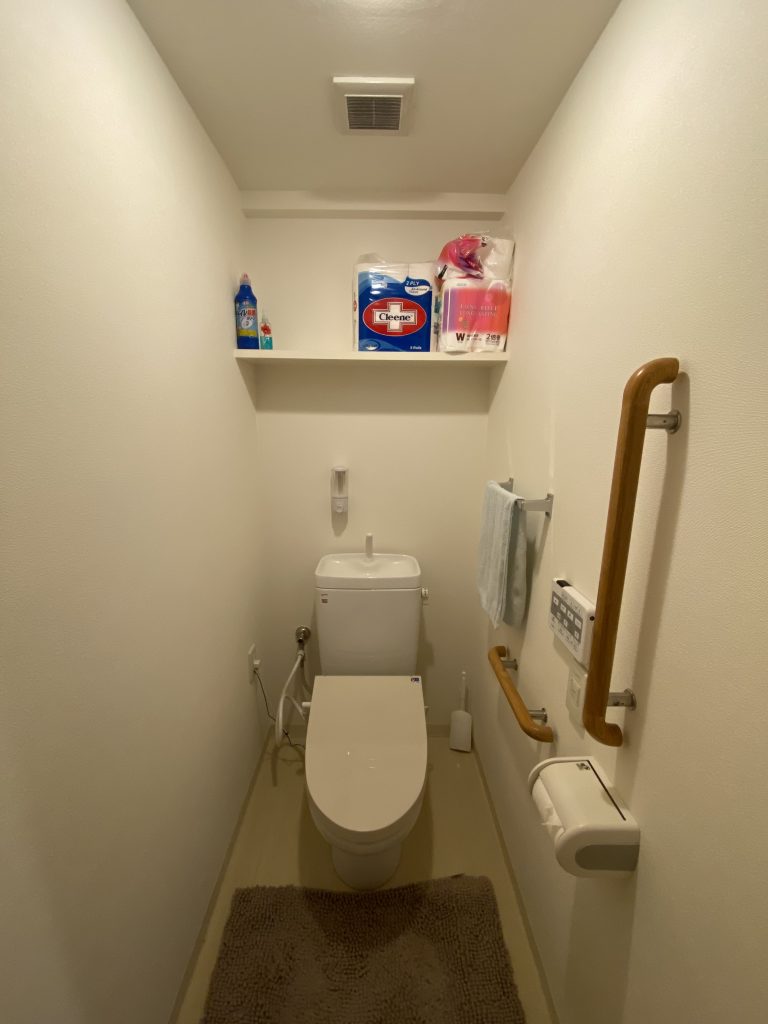
Next up we have a small toilet room. Unlike in the west where most homes have the toilet in the bathroom, the shower room and toilet in Japan are separated. This is actually very convenient. Also if you look above the toilet closet there is a small faucet. When you flush the clean water first goes through there so you can wash your hands and they use the dirty water to flush. Now that’s what I call eco-friendly. And then on the wall there you can see a control panel with all the buttons. The toilet has a bidet and derriere spray installed. The other control buttons are for water temperature, pressure, and movement. This is also unusual in the west but most updated homes in Japan have this kind of toilet.
The Bathroom

Moving on to the shower room. There is a sink under a mirror next to the washing machine. They are all in the same room as the bath and shower area. To the left of the washing machine is a see-thru sliding door to keep the water sprays in. The mirror has a button where you can set it to anti-fogging mode where a gentle heater heats the mirror so it won’t fog up when you take hot showers. The apartment didn’t come with a washing machine but we found a cool second hand washing machine which also functions as a dryer. We leave it for 3 hours and when the clothes come out they are clean and dry. If only they were ironed and folded as well. Maybe someday there will be a machine like that.
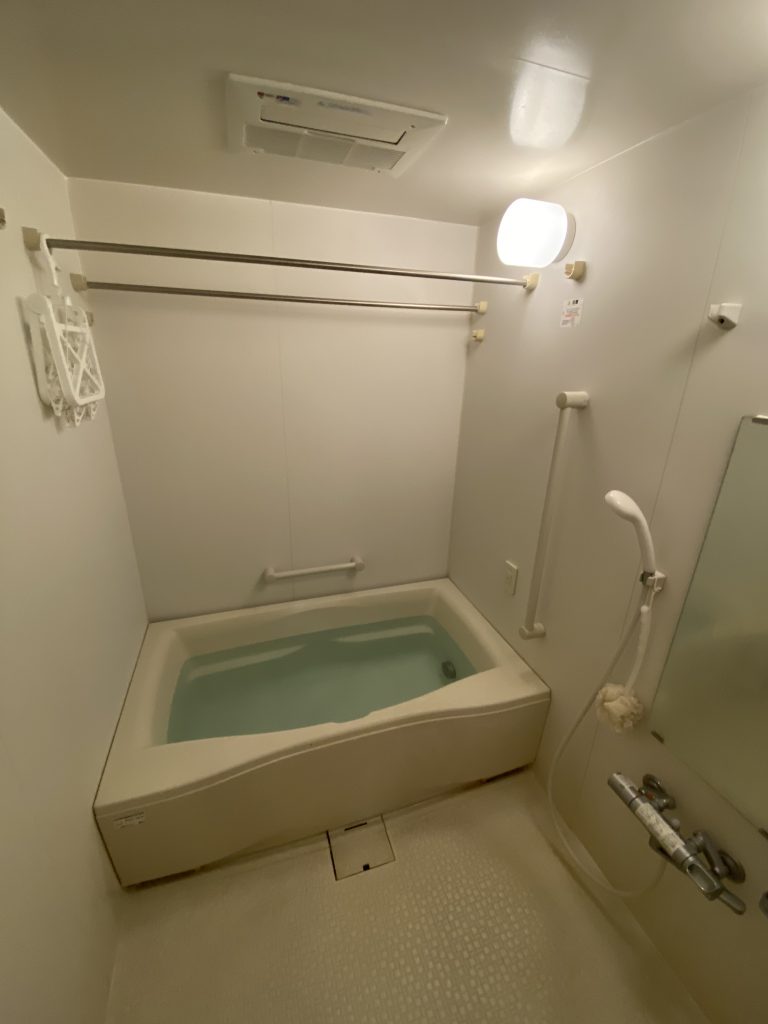
Now for the shower room. Unlike bathtubs in the west, some places require that you shower in the tub. But in Japan, there is a shower space next to the bathtub. Getting everything wet is fine. The bathing culture in Japan is also a little different because most families have ofuro. Ofuro means “bath,” but it’s done after you clean yourself thoroughly in the shower, and you just want to warm yourself up and relax those muscles in the hot tub. No bubbles, no soap in the tub. People usually sit in there for around 10 minutes before drying off. A lot of families also share the same bathwater. Therefore, you have to leave it clean for the next person.
Also, there is an unspoken hierarchy to who gets to take the ofuro first. If you have a guest, you usually let them take the first dip as a courtesy. It is also not uncommon to reuse the bathwater for several days. I don’t have this in my tub, but some high-tech bathtubs have a reheat function. My tub only has a self-filling timer where you can set the time, temperature, and amount of water.
As you can see in the photo, the ceiling also has a vent. There is a control panel outside where you can set a dryer timer. It dries the whole shower space. You can also hang wet clothes and towels to dry in here on those poles.
The Living Room

As for there rest of my apartment, I can show you the pictures of my living room here. Nothing unusual or uniquely Japanese about it. The only noteworthy thing is this control panel for the door in the photo below. When somebody rings our doorbell, they have a short video and audio of them recorded. So when we aren’t home, they can leave a short video to let us know who they are or if we have a package in the mailbox. And on the right of that panel is the floor heater control. It’s really handy in winter.
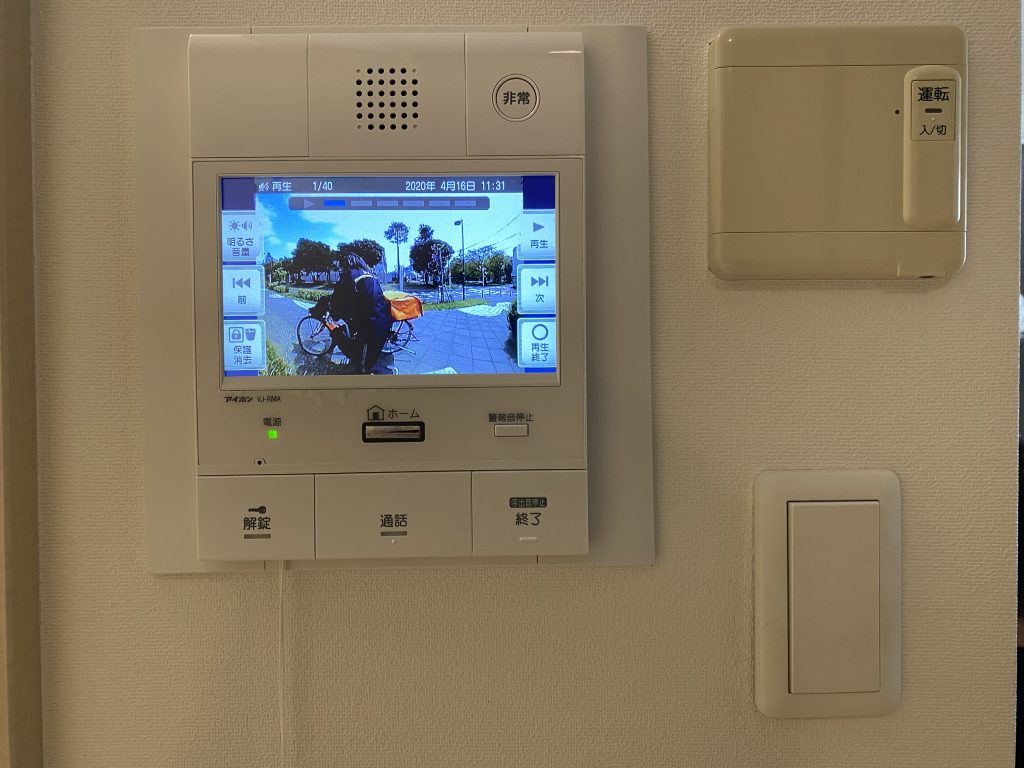
Thank you so much for checking out my home. I hope this gives you an idea of what a typical Japanese apartment looks like and what features it might have. I live with my husband so we can afford a slightly more spacious place for both of us, but the things shown here are quite common in most updated apartments in Japan.
Related Articles
AI Girlfriends: Exploring the World of Virtual Companions
AI-generated girlfriends are growing popular on Japanese Twitter. Learn more about what they can do, and what it could mean for the future.
Discover Japan’s Top 10 Must-Visit Places
From stunning landscapes to bustling cities, Japan offers many unforgettable experiences. Here are Japan’s top 10 best places to visit!

